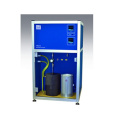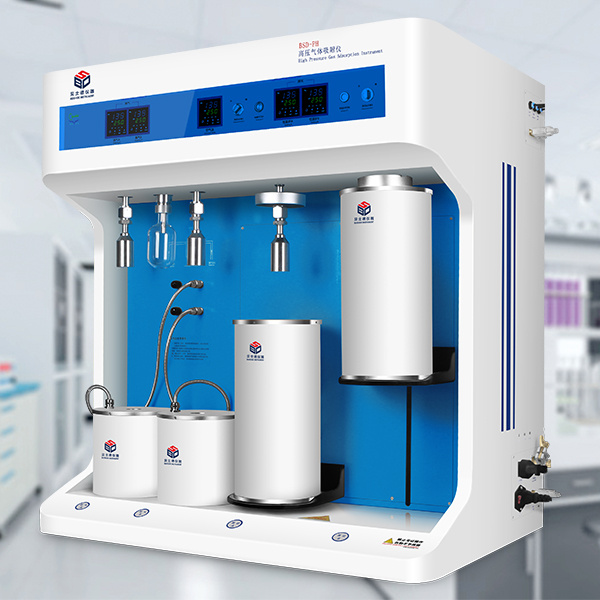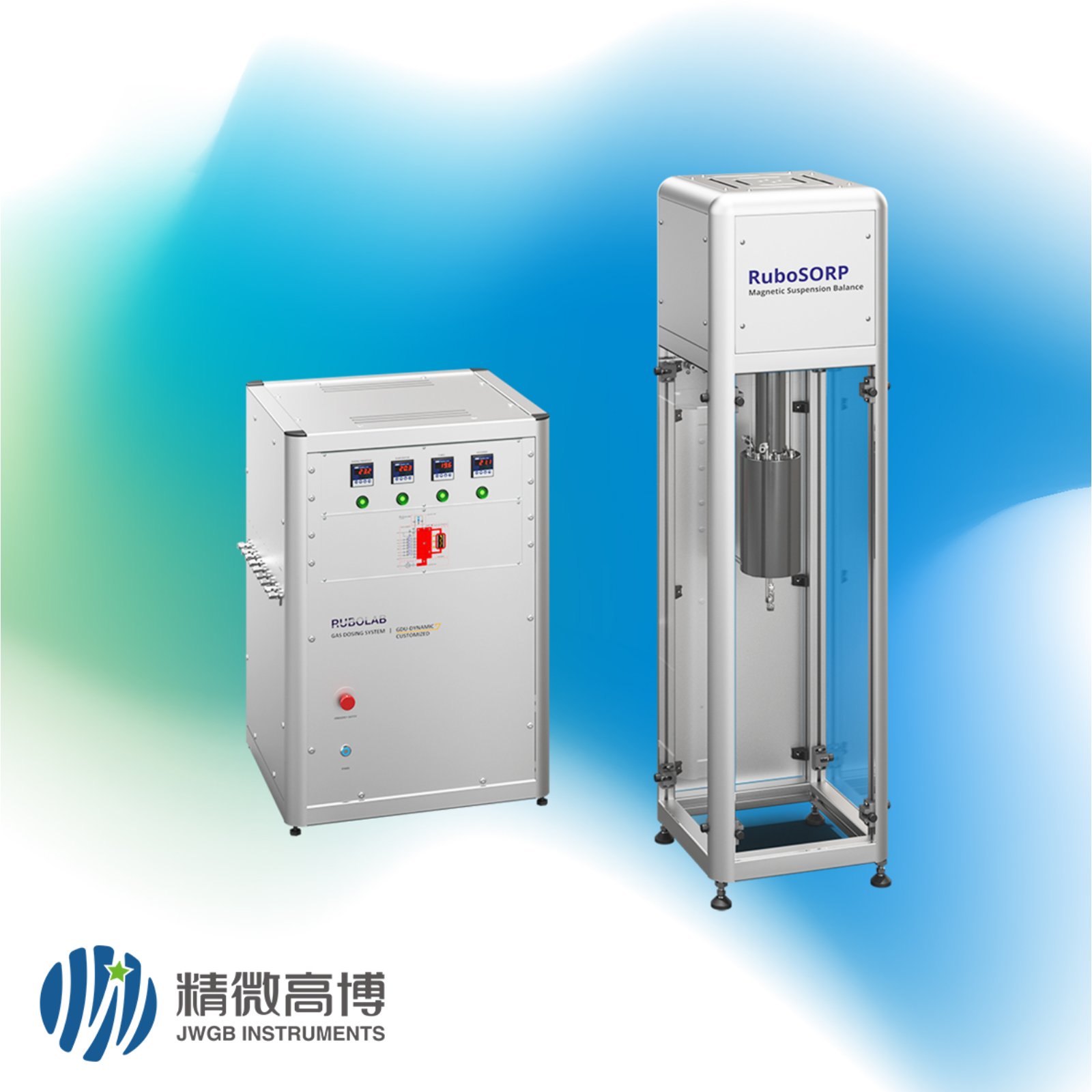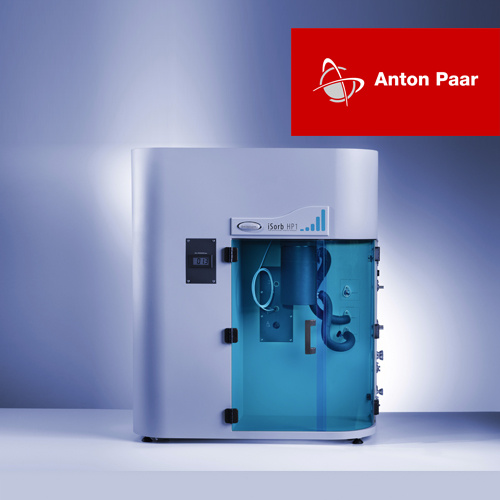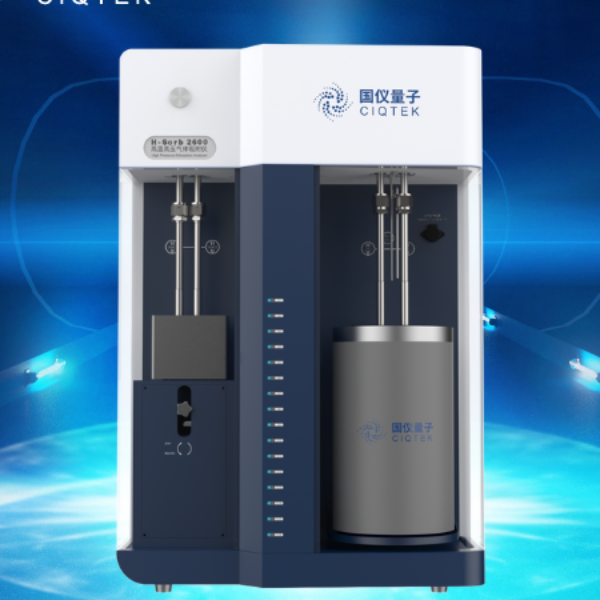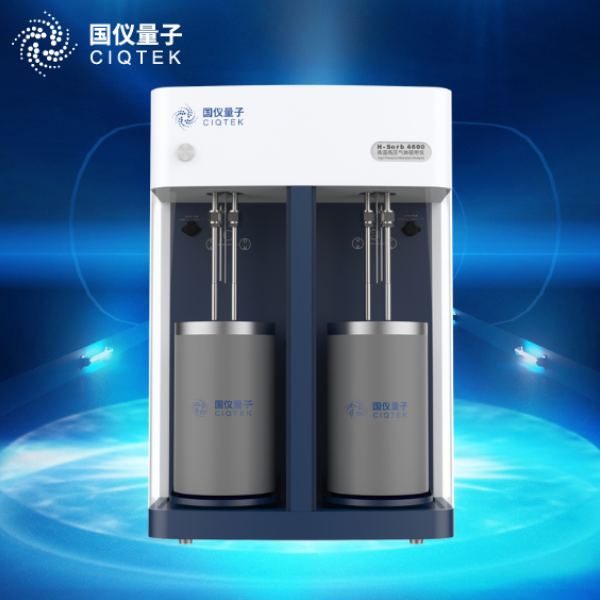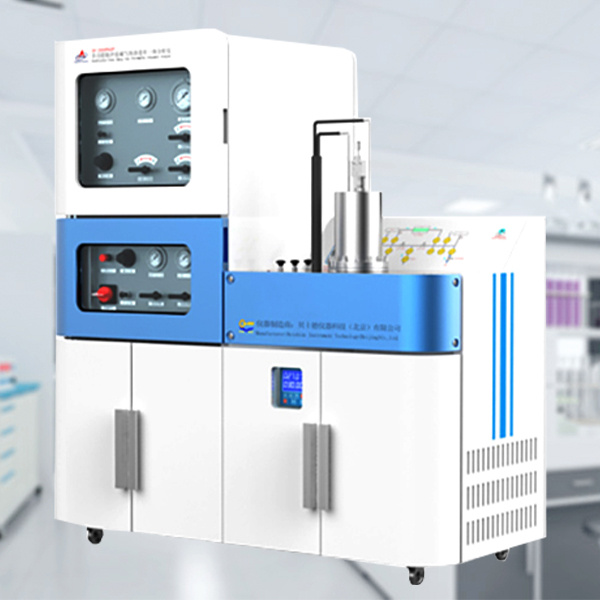方案详情
文
确定MOFs材料和其他微孔材料的储氢性能是现代推进氢经济的一个重要任务。在发展氢燃料电池中,得到有效的储氢方法是一个非常重要的方面。而在压缩氢气中,单位质量上能量密度很高,单位体积上的能量密度很低,因此不利于氢气储存。以液态形式储氢(大气压下20K)也不利用节能。只有将氢气通过被吸附,存储在固体材料里是最好的选择,比压缩的气态氢需要的体积小,所需的能源消耗也比液化氢气少得多。由于能够获取高氢能量密度和吸附的可逆性,将氢气作为吸附气,高压注入到高比表面的MOFs材料表面进行储存是一种非常理想的过程。本文主要使用美国麦克的高压气体吸附仪HPVA研究了由BASF生产的四种MOFs材料的储氢性能。
方案详情

麦克默瑞提克(上海)仪器有限公司Micromeritics Instrument (Shanghai) Ltd.The Science and Technology of Small Particles上海民生路550号1505-1509室, 邮编200135 Suite 1505-1509, 550 Minsheng Rd., Shanghai, P.R. China 200135www.micromeritics.com www.micromertics.com.cn t.sina.com.cn/micromeritics Application Note Application Notes5 使用 HPVA 研究金属有机骨架(MOFs)材料在高压下的储氢性能 摘要 确定 MOFs 材料和其他微孔材料的储氢性能是现代氢经济推进的一个重要任务。在发展氢燃料电池中,得到有效的储氢方法是一个非常重要的方面。而在压缩氢气中,单位质量上能量密度很高,单位体积上的能量密度很低,因此不利于氢气储存。以液态形式储氢(大气压下 20K)也不利用节能。只有将氢气通过被吸附存储在固体材料里是最好的选择。由于能够获取较高的氢能量密度和吸附的可逆性,将氢气作为吸附气,高压注入到高比表面的MOFs 材料表面进行储存是一种非常理想的过程。本文主要使用美国麦克的高压气体吸附仪 HPVA 研究了由BASF 生产的四种 MOFs 材料的储氢性能。 Using the HPVA to Analyze Hydrogen Storage Potentialof Metal Organic Frameworks at High Pressures Determining the hydrogen storage capabilities of materials such as Metal Organic Frameworks (MOFs)and other highly microporous materials is an important undertaking in the modern push for a hydrogeneconomy. An efficient method of hydrogen storage is a critical aspect in the development of hydrogenfuel cells. Hydrogen gas has a high energy density by mass but a low energy density by volume whenstored as a compressed gas, making it unfavorable for hydrogen storage. Maintaining hydrogen in a liquidstate (20 K at atmospheric pressure) also is not energy efficient. Storing hydrogen in a solid material byadsorption is the best alternative, requiring less volume than compressed gaseous hydrogen andconsuming far less energy than required to liquefy hydrogen. Dosing high pressure hydrogen onto highsurface area MOFs for storage as an adsorbed gas is a highly desirable process due to the high hydrogenenergy density obtained and the availability of reversible adsorption. Four commercially available MOFs produced by BASF were analyzed with Particulate Systems’HighPressure Volumetric Analyzer (HPVA) to determine their hydrogen storage potential. Those MOFs are:Basolite C300, a copper-based organic framework; Basolite F300, an iron-based organic framework; Figure 1: An overlay of the excess isotherms generated from theanalysis ofvarious MOFs with hydrogen at 77 K. The solid circlesrepresent the adsorption isotherms and the hollow circles representthe desorption isotherms. Basolite Z1200, a zinc-based organicframework; and Basolite A100, analuminum-based organic framework.Approximately 500 mg of each MOFwas placed under vacuum and slowlyheated up to 200 °C for a period of 12hours (Z1200 was only heated to 100C to prevent degradation of thesample) using the HPVA degas port.All four samples were analyzed atliquid nitrogen temperature (77 K) in aliquid nitrogen bath, utilizing thecryogenic option for the HPVA, up topressures of 100 bar. An isothermaljacket was used to maintain thecryogenic temperature zone of thesamples during analysis. At 77 K, eachMOF showed different amounts ofhydrogen uptake; C300 adsorbed themost while F300 adsorbed the least. Aplot of the isotherms generated fromthe analyses is shown in Figure 1. A Micromeritics Brand T.(770)662-3620 www.particulatesystems.com The isotherms displayed in Figure 1 exhibit a phenomenon in which the adsorption reaches a maximumand then declines as the pressure increases. This phenomenon is due to the increasing density of thehydrogen in the pores of the material at elevated pressures. The density of the adsorbing gas (H2) insidethe pores (a function of pore size) is far greater than the density of a non-adsorbing gas (He). Since thecalculated amount of gas in the sample cell is based on the density of helium and its resulting free-spacevolume (including the volume inside the pores), the amount of free gas in the sample cell isoverestimated. When using the static volumetric method, like that of the HPVA, a maximum in the isotherm may be observed. This isused to create the excess isotherm asshown in Figure 1. To generate theabsolute isotherm, the density of thegas and the volume of the pores mustbe included in the calculations. Sincethe pore size and distribution of thesetypes of materials are not readilyavailable to most users, the excessisotherm will suffice and is commonlyreported for adsorption isotherms. An alternative method to see thestorage capacity of materials from theexcess isotherm is to view the amountof gas adsorbed as a function of thesample weight. The target weightpercentage of hydrogen uptake forstorage purposes is between 7% and8%. Figure 2 shows an overlay of theweight percentage plots based on theisotherms displayed in Figure 1. Since the Basolite C300 adsorbed themost hydrogen at 77 K, it was alsoanalyzed at two additional tempera-tures. For one analysis, an ice bath wasused to maintain the sample at 0 C.For the second, a recirculating watervessel was used to maintain the sampletemperature at 30°C. For these twoexperiments, the sample was dosedwith hydrogen to pressures up to 200bar, the full extent of the pressurerange obtainable with the HPVA. Theexcess isotherms are shown in Figure 3and the weight percentage plots inFigure 4. Figure 2: Weight percentage plots of various MOFs analyzed withhydrogen at 77 K. Figure 3: Hydrogen uptake on Basolite C300 at 0 °℃ (dark blue) and30℃ (light blue). Figure 4: Weight percentage plots ofhydrogen on Basolite C300 at0 ℃(dark blue) and 30 ℃ (light blue). When reviewing the data in Figures 1 through 4, it is clear that the HPVA is a powerful tool forevaluating the hydrogen storage potential in MOFs and other microporous powders. The HPVA, with itswide temperature range (from cryogenic to 500 C) and its ability to dose up to 200 bar of pressure, isperfect for analyzing samples under extreme conditions while providing accurate data. 第页MIC China Communications Drive, Norcross, GA
确定
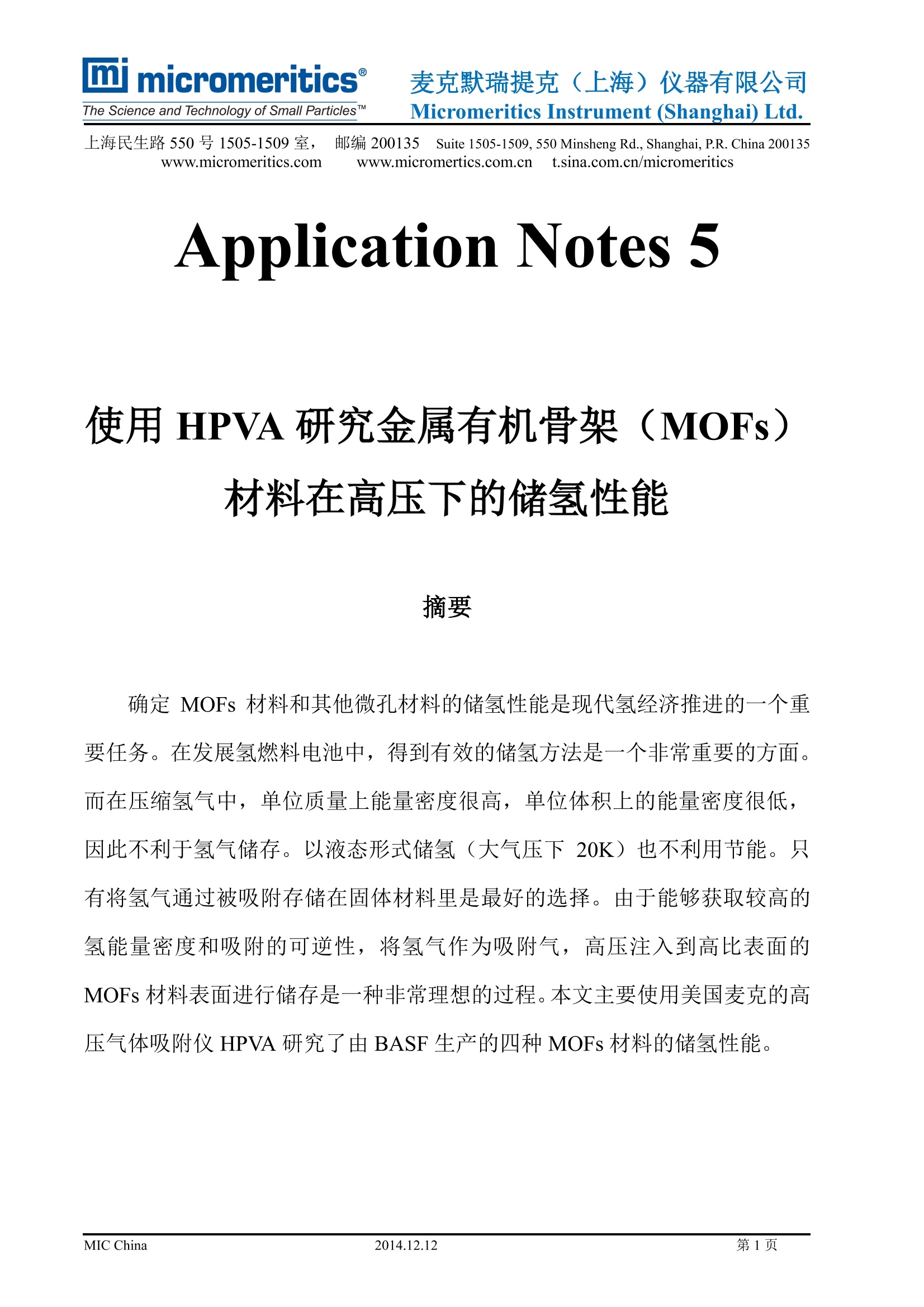
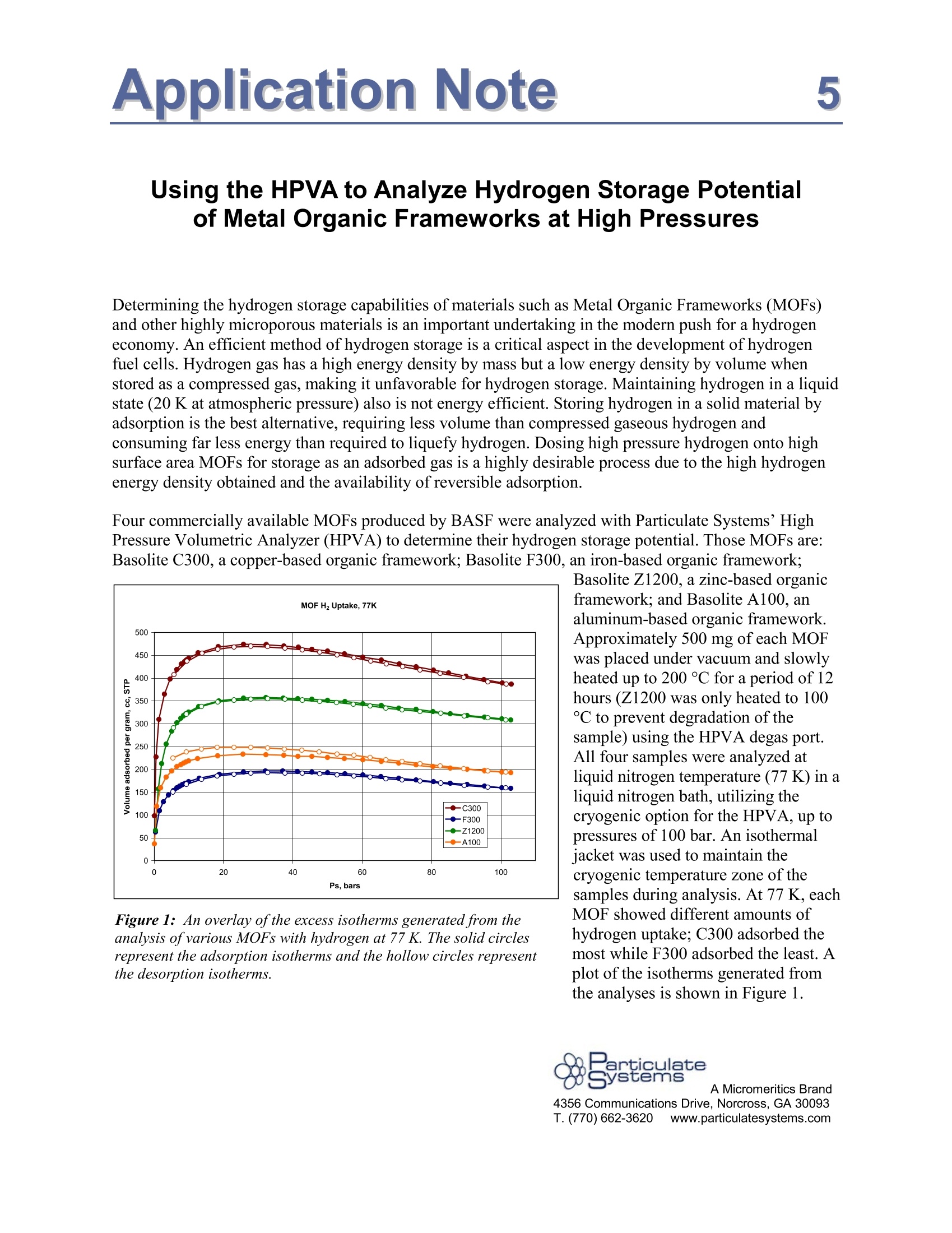
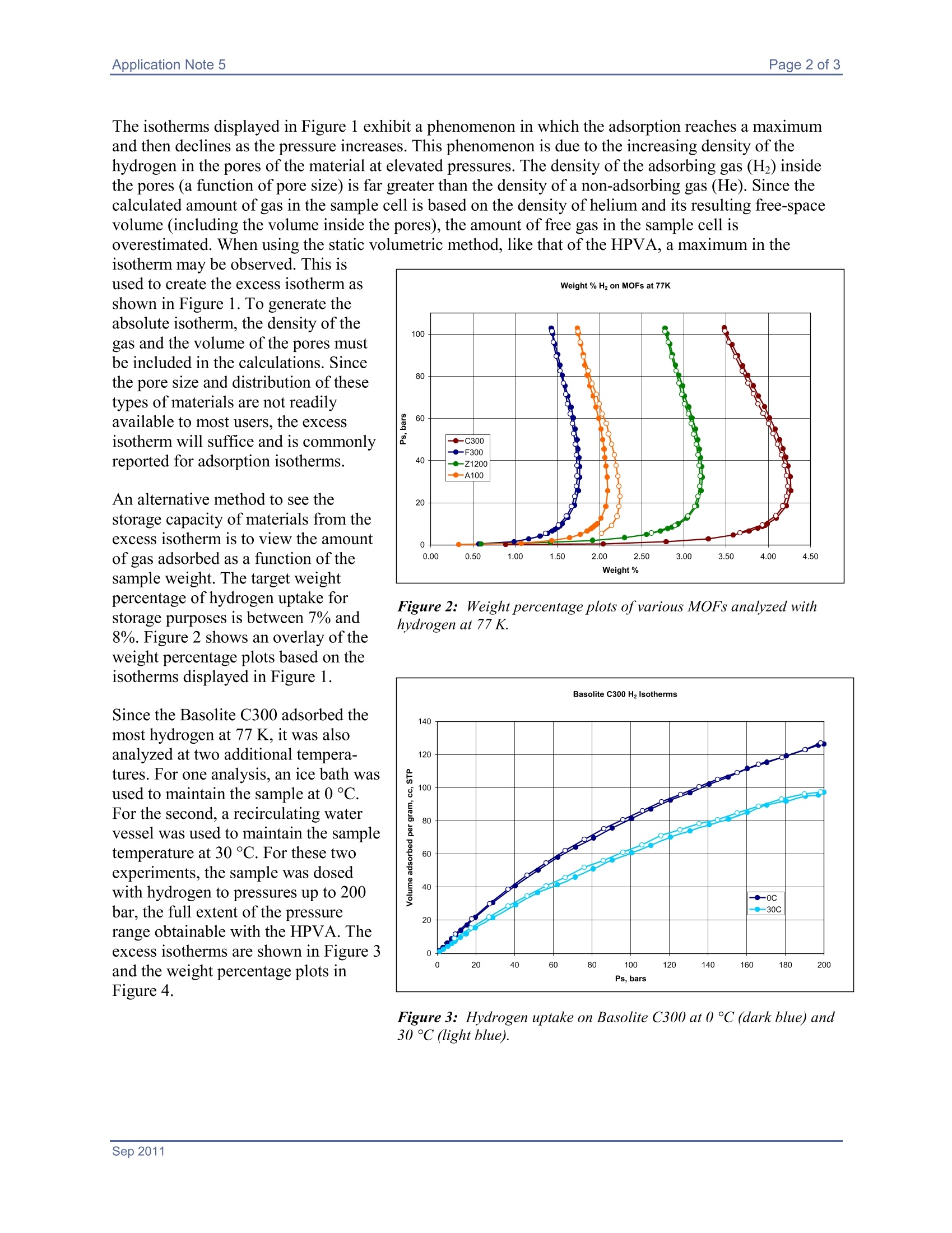
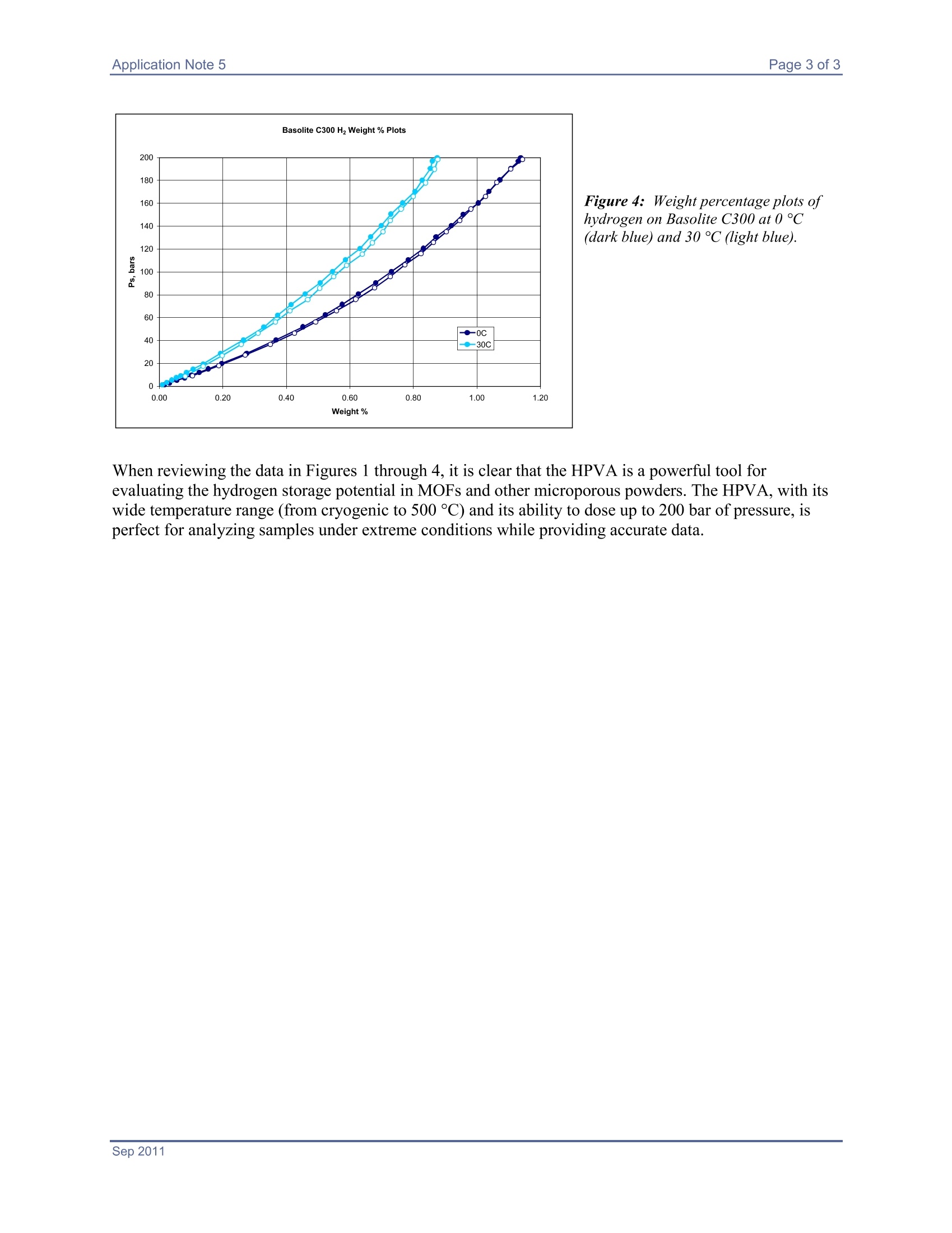
还剩2页未读,是否继续阅读?
麦克默瑞提克(上海)仪器有限公司为您提供《使用HPVA研究金属有机骨架(MOFs)材料在高压下的储氢性能》,该方案主要用于其他中--检测,参考标准--,《使用HPVA研究金属有机骨架(MOFs)材料在高压下的储氢性能》用到的仪器有高压气体吸附仪HPVA II
推荐专场
相关方案
更多
该厂商其他方案
更多










